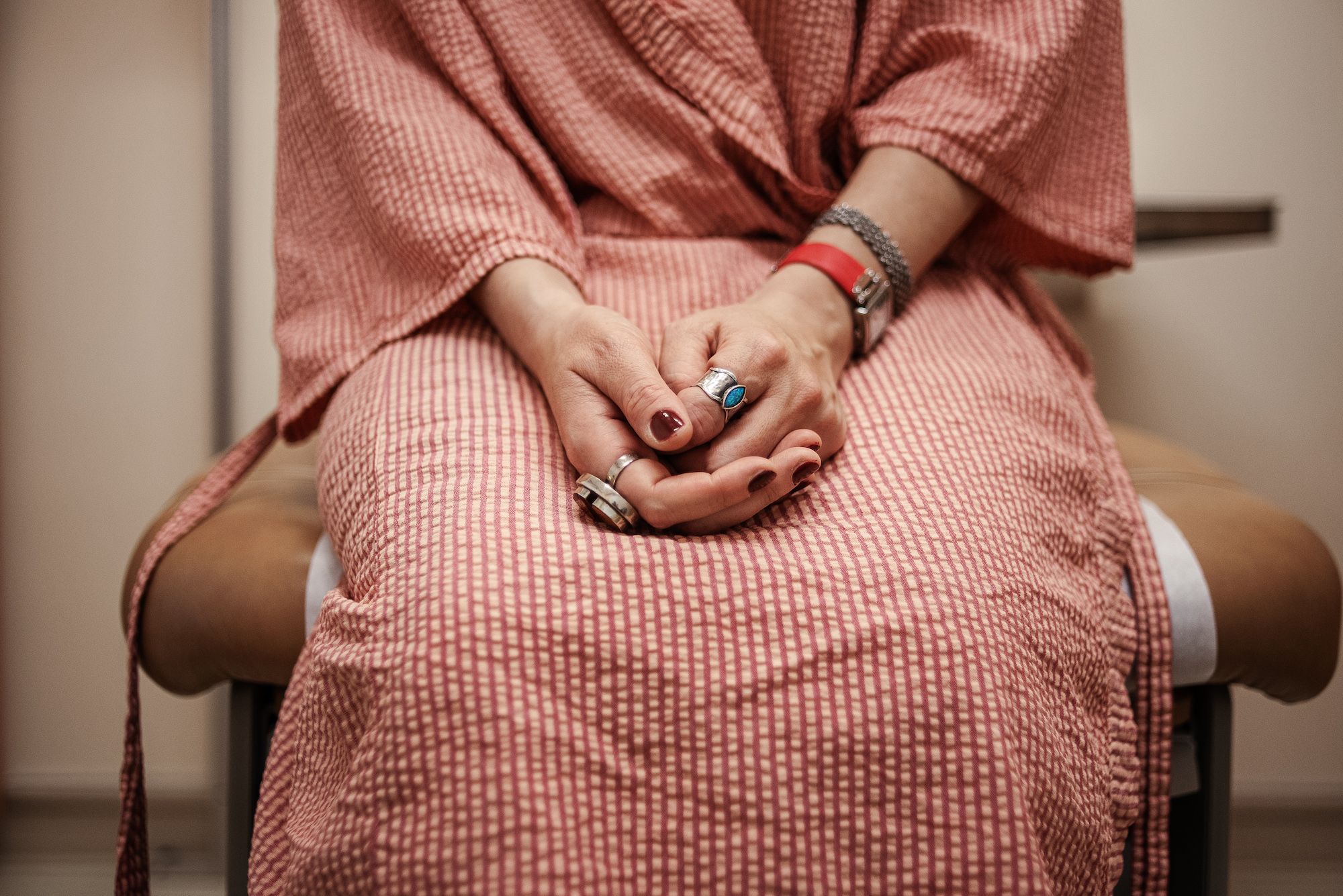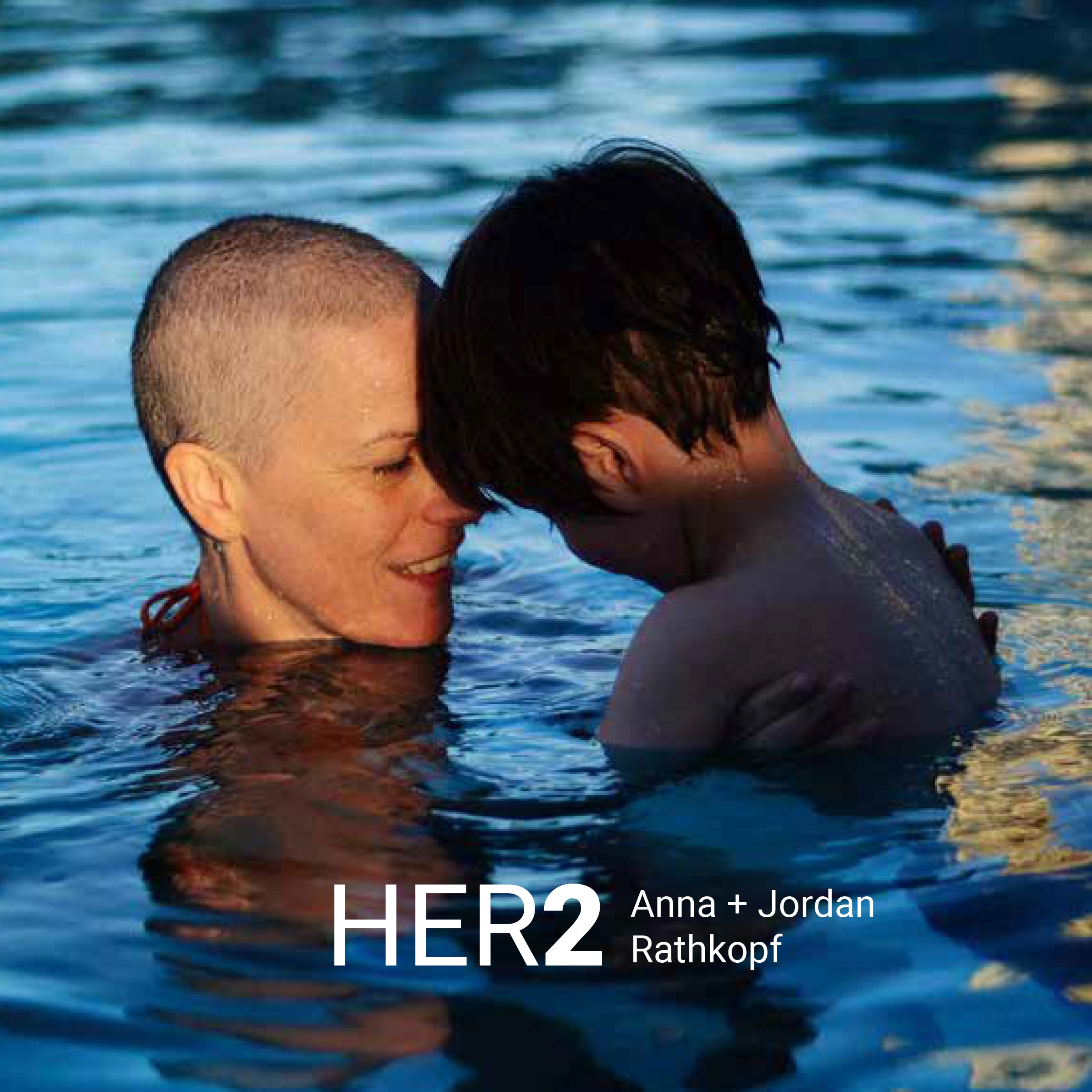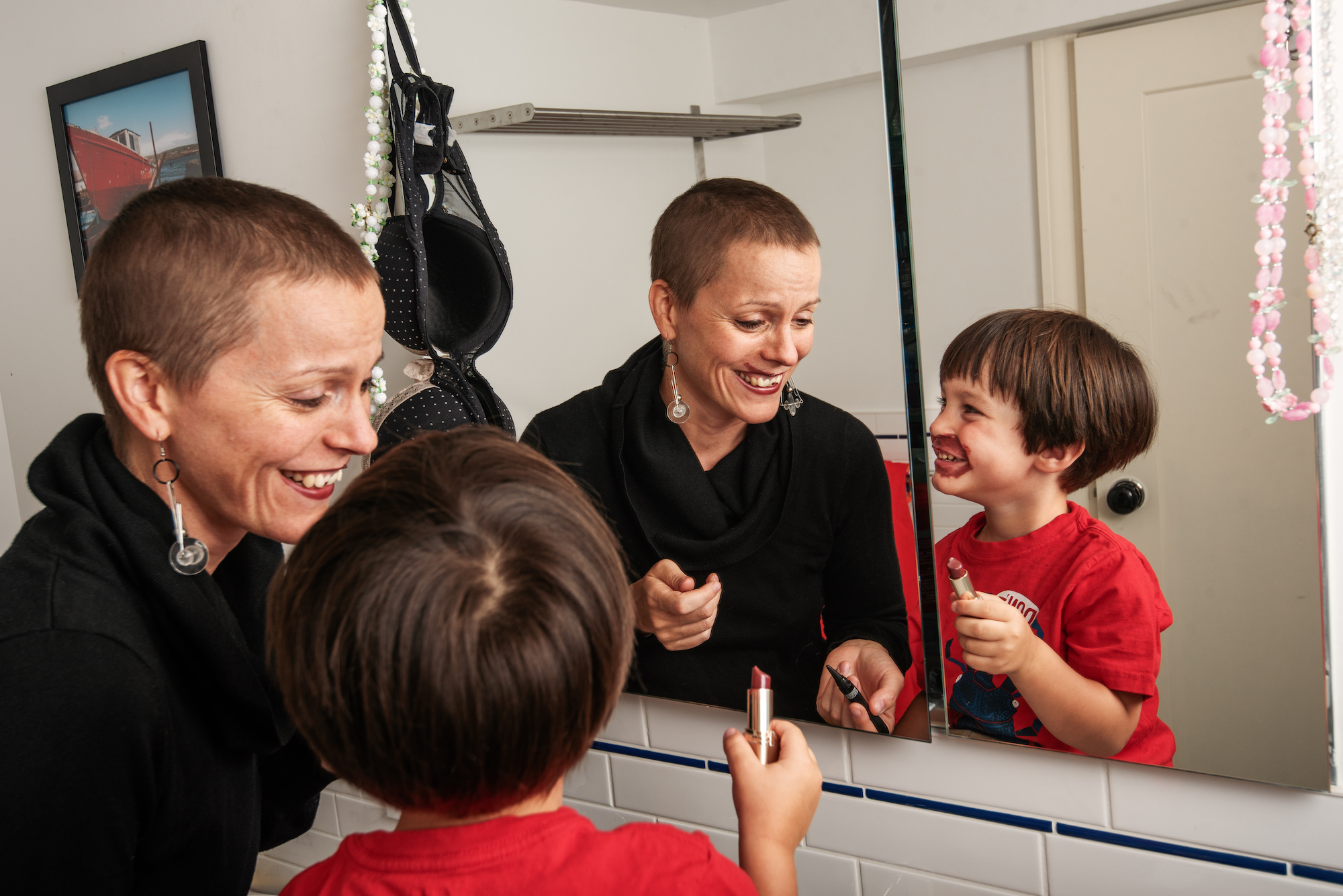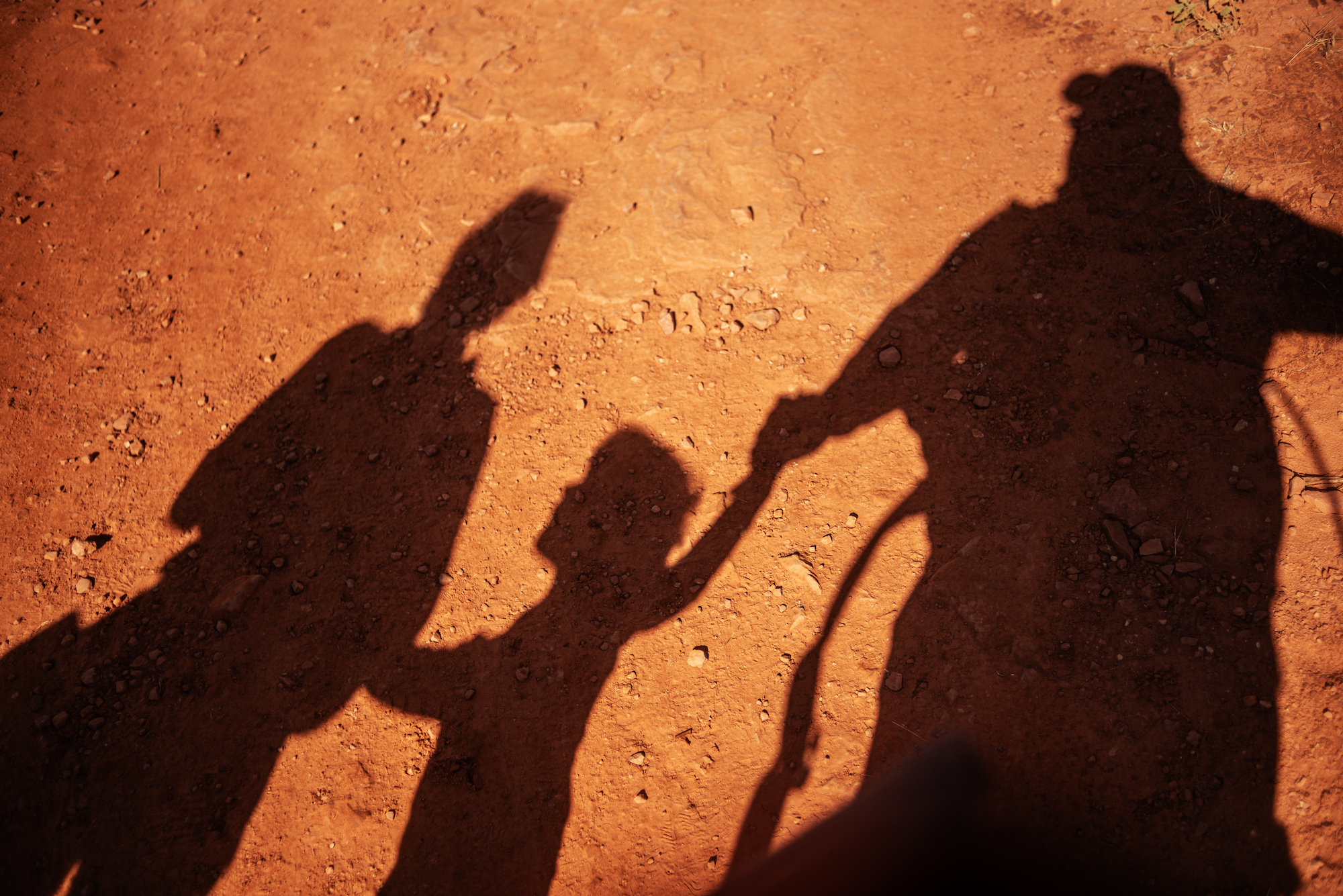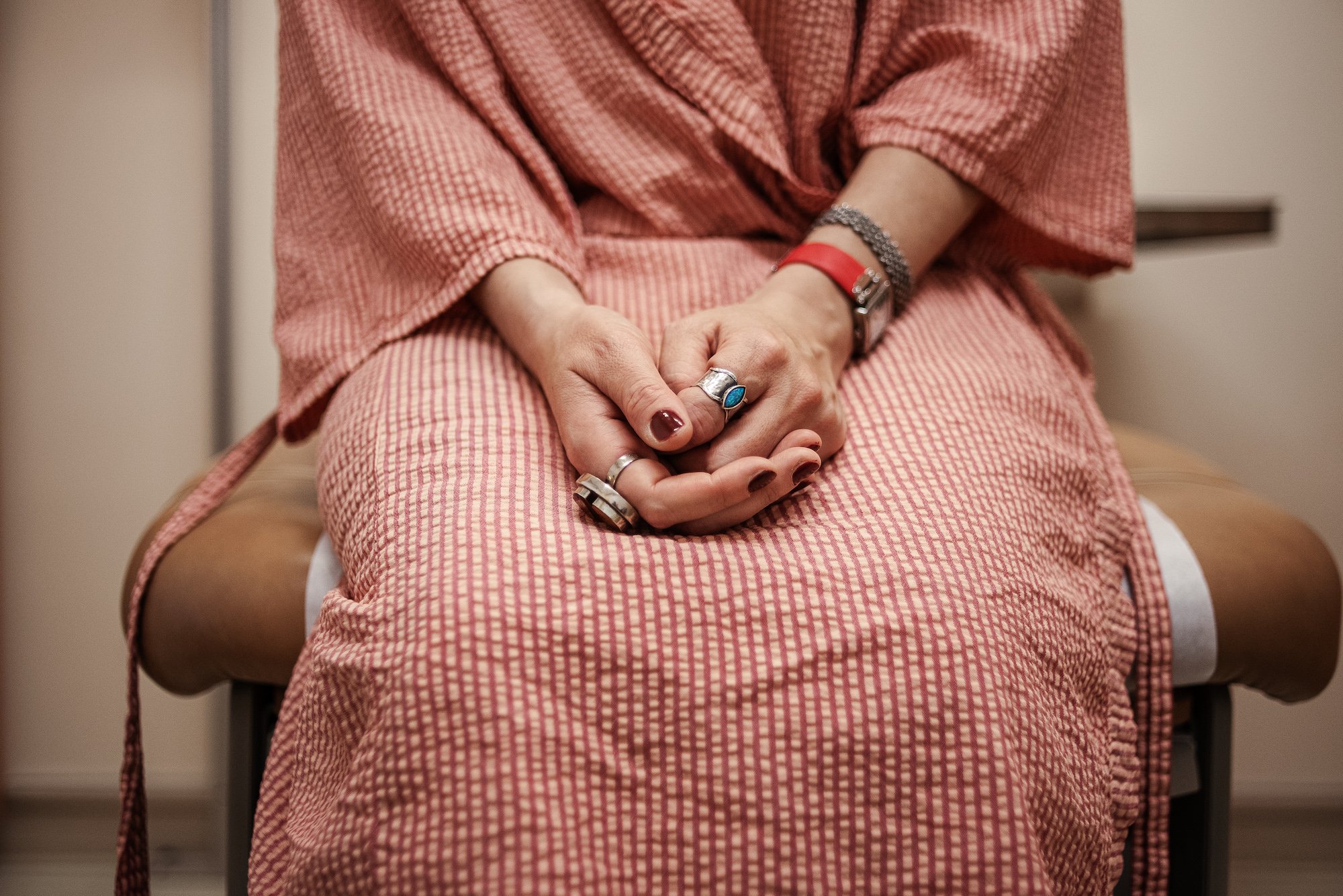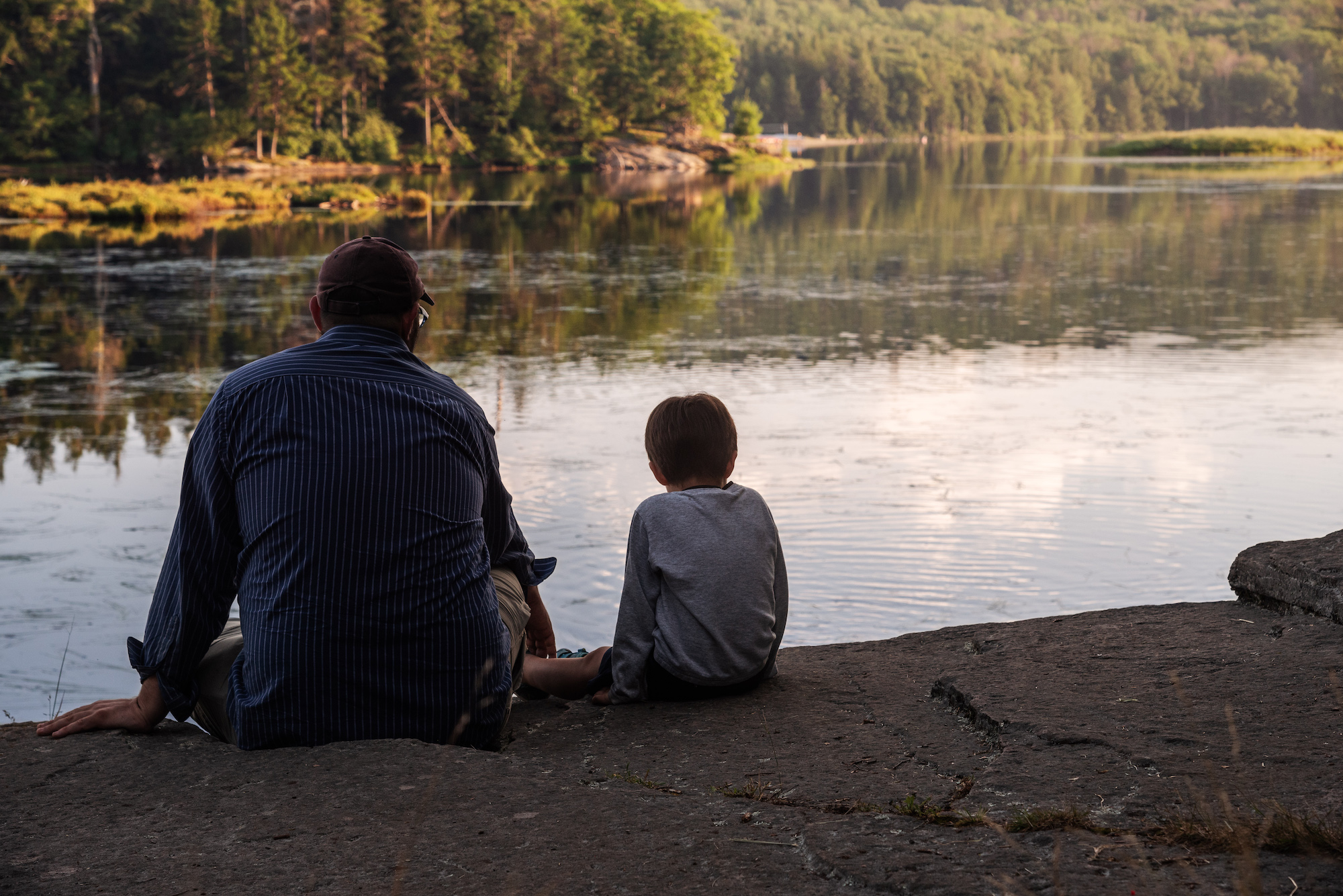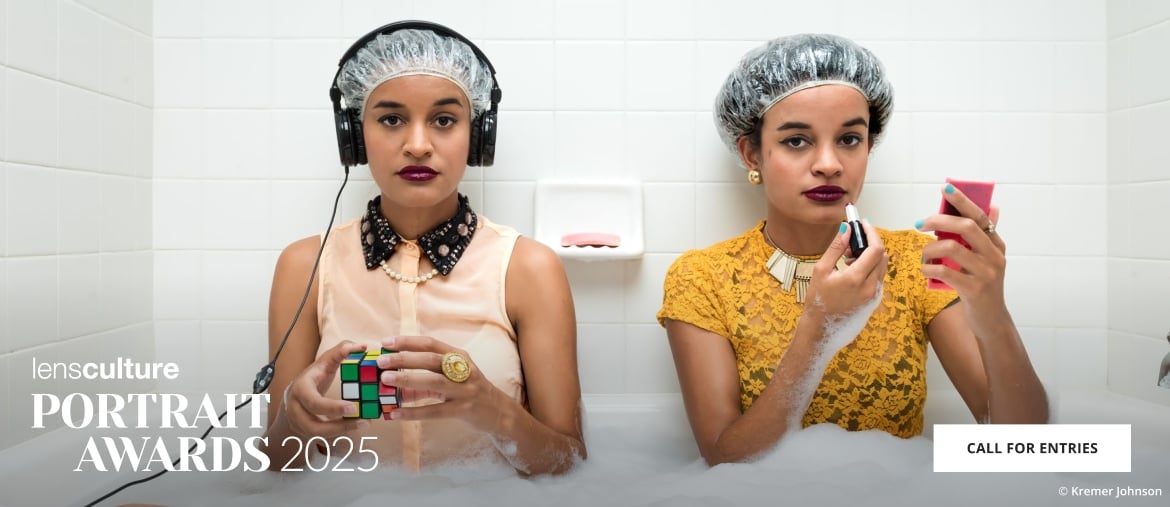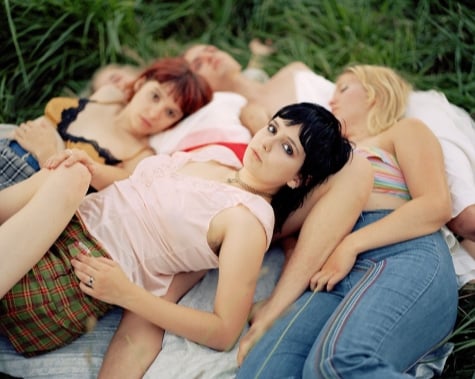“I heard the word cancer, and I felt like my life ended. Yet there was the next morning, and then another one and another one.” Nestled three-quarters into the book HER2: The Diagnosed, The Caregiver and Their Son, this quote sits next to an image of a woman, head in hands, being embraced by another on the steps of one of New York’s brownstone buildings. Perhaps a fleeting moment from one of these mornings, the photograph holds the weight of the world in one frame; a scene of exhaustion and care.
At age 37, Anna Rathkopf was diagnosed with an aggressive form of breast cancer. HER2: The Diagnosed, The Caregiver and Their Son is the body of work that emerged from this experience; a project partially invoked as a response to not being able to find relatable imagery of this new and overwhelming trial Anna, her husband Jordan and their young son Jesse were suddenly faced with. A photographic duo by trade, the couple turned their cameras on one another and themselves to navigate the illness that upended their lives. Seven years later, the photobook HER2: The Diagnosed, The Caregiver and Their Son comes into the world during Breast Cancer Awareness Month (October) and National Family Caregivers Month (November).
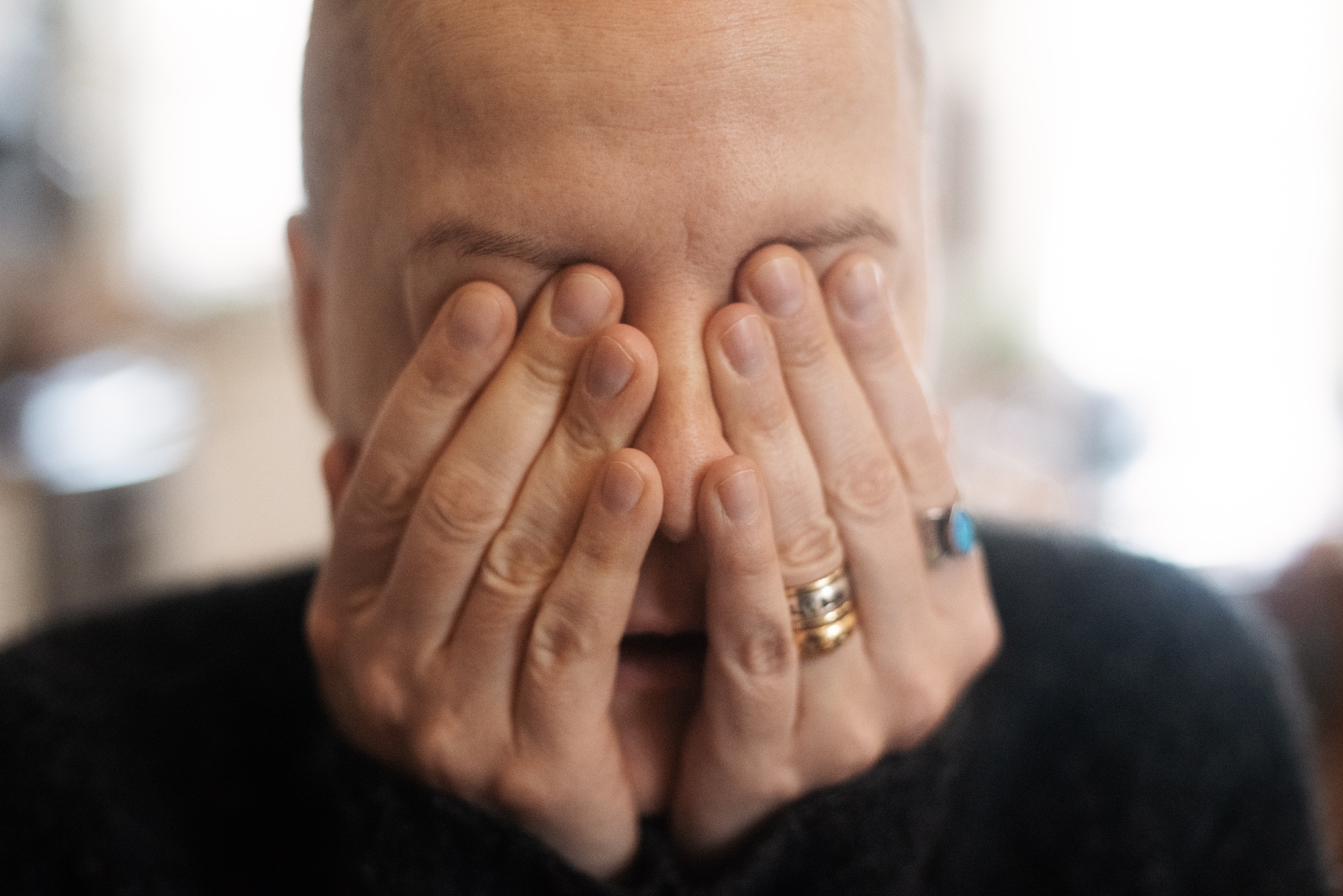
In the first few pages of the book, a pair of dictionary definitions neatly tidy the jolt of unforeseen illness into words. Diagnosis: “An answer or solution to a problematic situation.” Acting as a clinical counterpoint to the emotional flow of photographs that follow—an uneasy mix of apprehension, examination, hospital rooms and treatment that define the first stage of illness—the text touches on the desperate scramble for sense and understanding that often occurs when struck by the unknown.
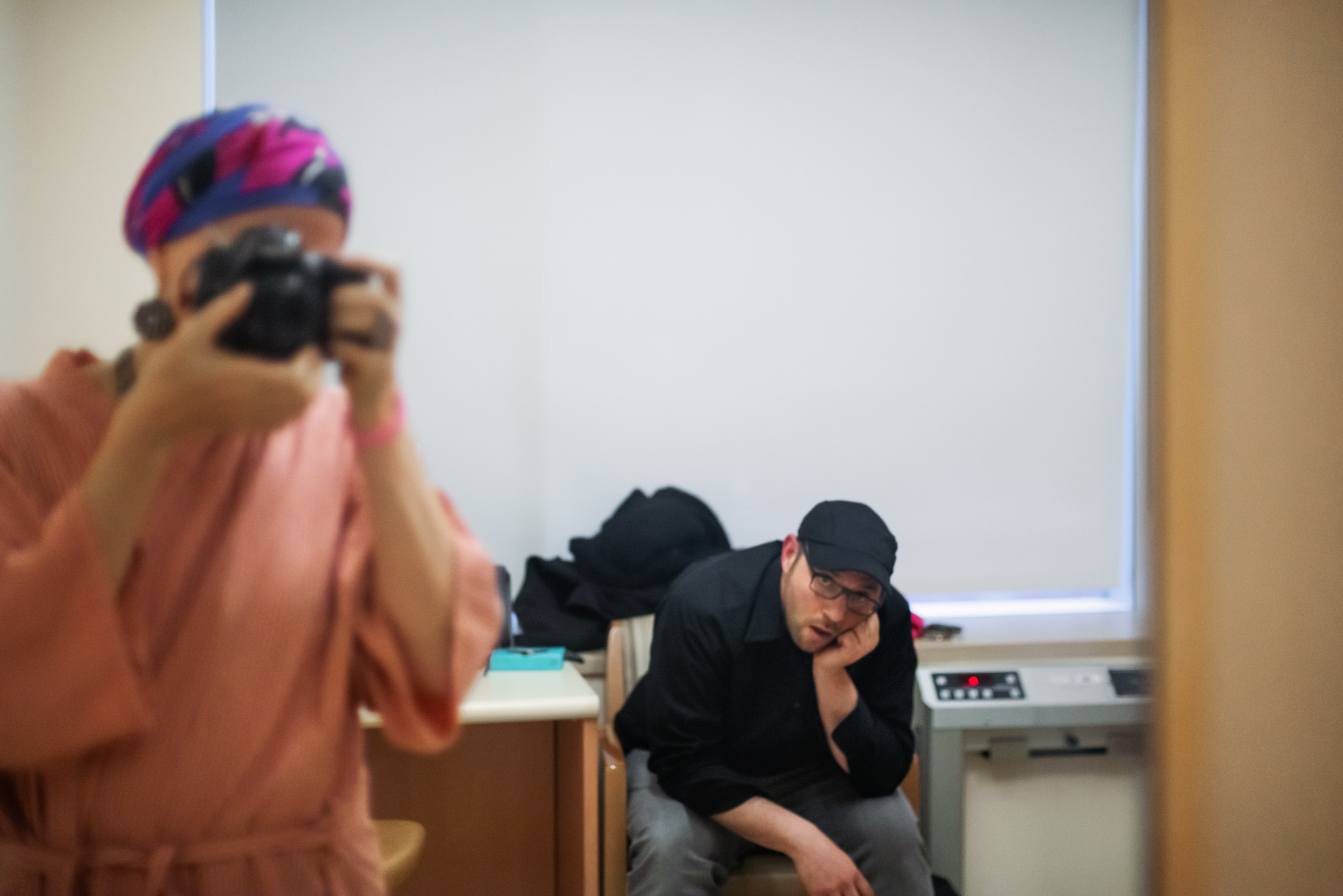
These beginning scenes amplify the sharpening of time that accompanies crisis, taking place in what looks like winter; a frosty blue cityscape, the pain and stillness of endless waiting, a snowy screensaver on the computer screen of a hospital room where Anna is being examined, her feet poking out of beige fabric.
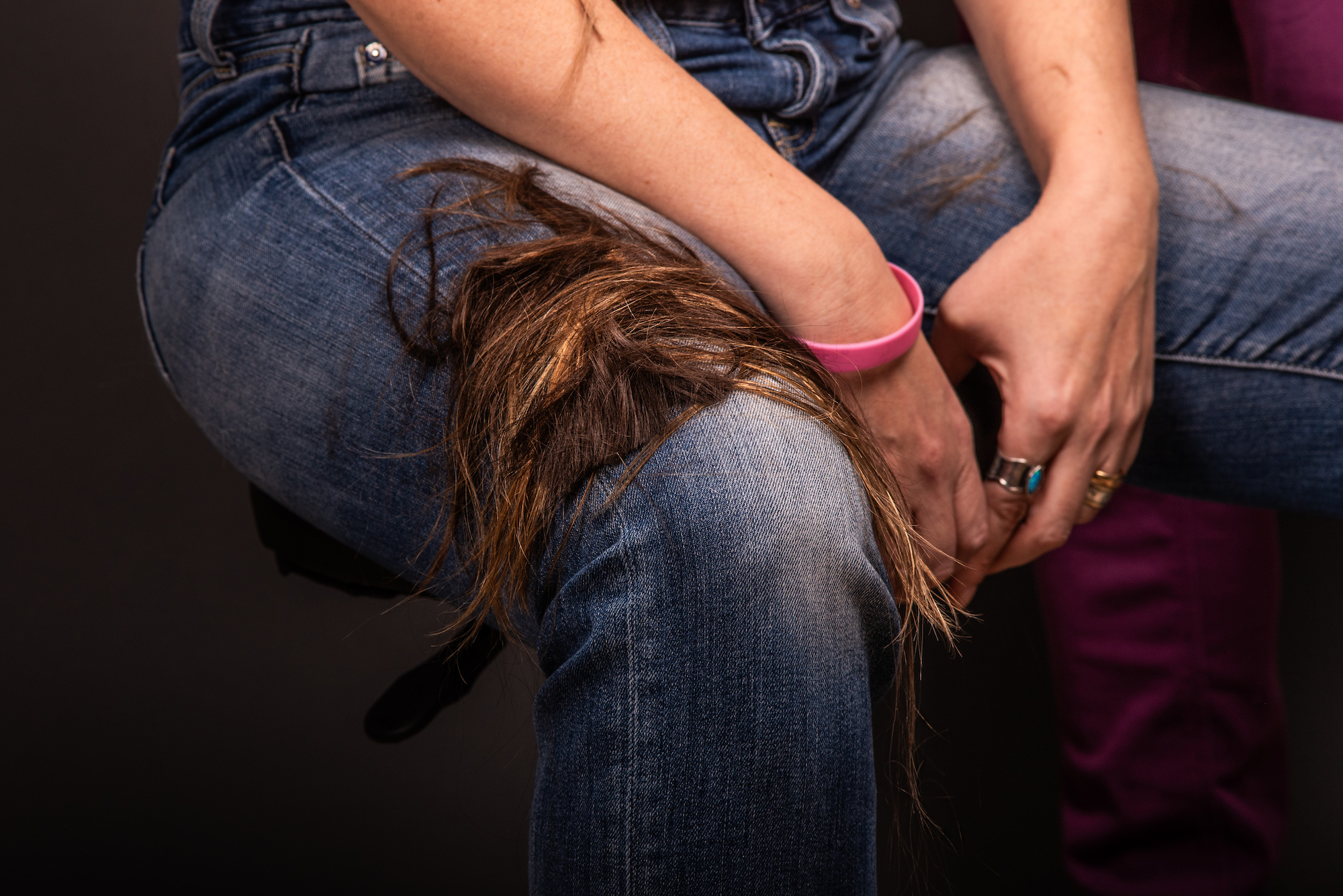
A photograph of the page of a notebook, filled with questions, draws our gaze to one particular fragment: “why?” There are no simple answers on how to deal with a “problematic situation” of this scale, and the whirlwind of practical, relational, existential and emotional questions that the whirlwind of cancer sets in motion. But in their courageous decision to invite readers on their journey, the Rathkopfs created a way of processing their struggle—and in doing so, an invaluable companion piece for other families who are dealt similar earth-shattering news.
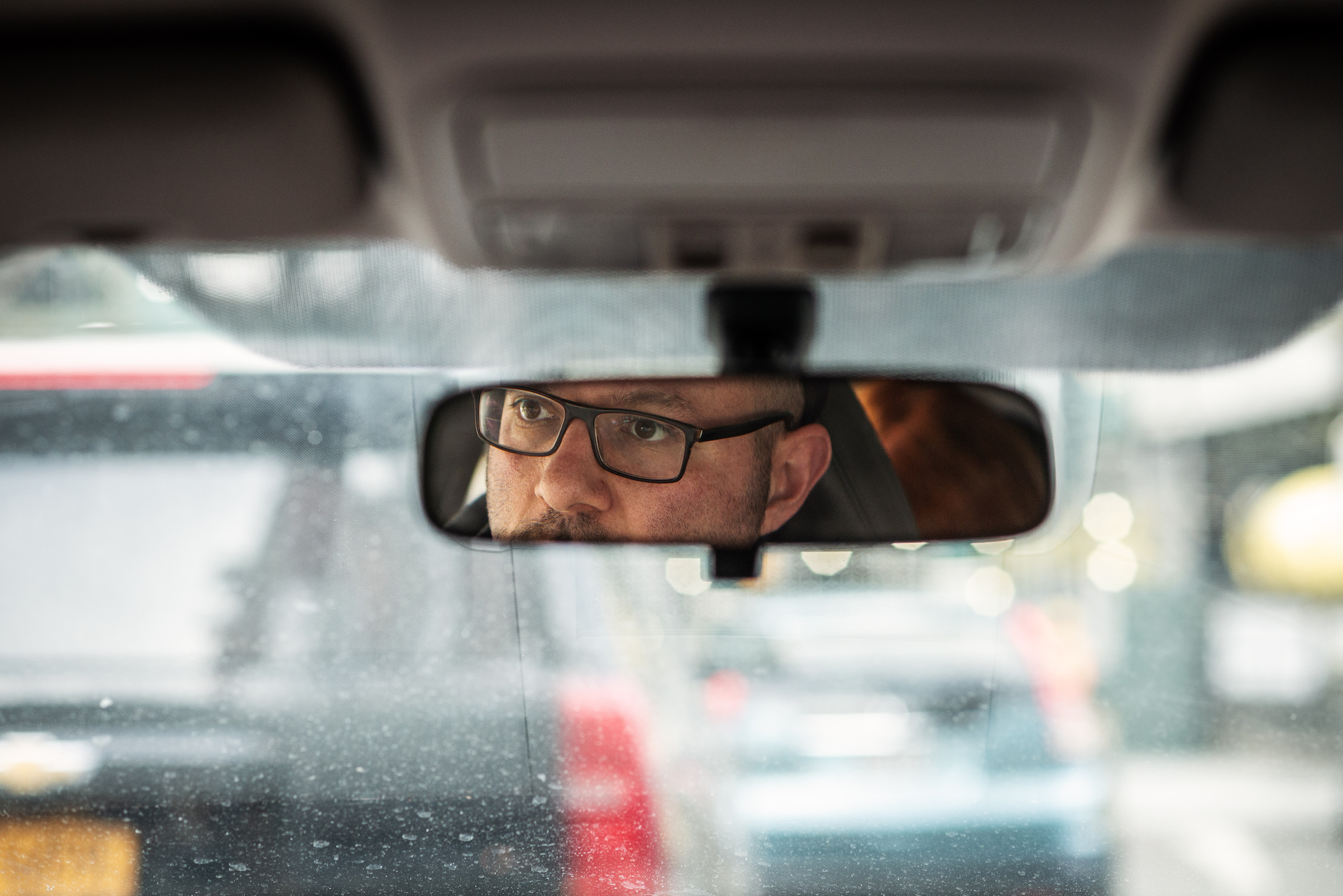
Photography can be a medium of documentary and poetry, a container for contradictions, a connector between multiple perspectives, a composer of self, a process of repair. In HER2: The Diagnosed, The Caregiver and Their Son, these many different facets come into play, the camera becoming a companion and witness in the complex web of the family’s intersecting experiences. In the conflicting demands to be strong for those around you, choosing this kind of vulnerability and transparency is powerful. “Illness doesn’t just affect the diagnosed; it impacts a community of people around us. Jordan’s images offered a different perspective, deepening my understanding of the burden carried by loved ones during illness,” Anna writes in a short essay that appears at the end of the book.
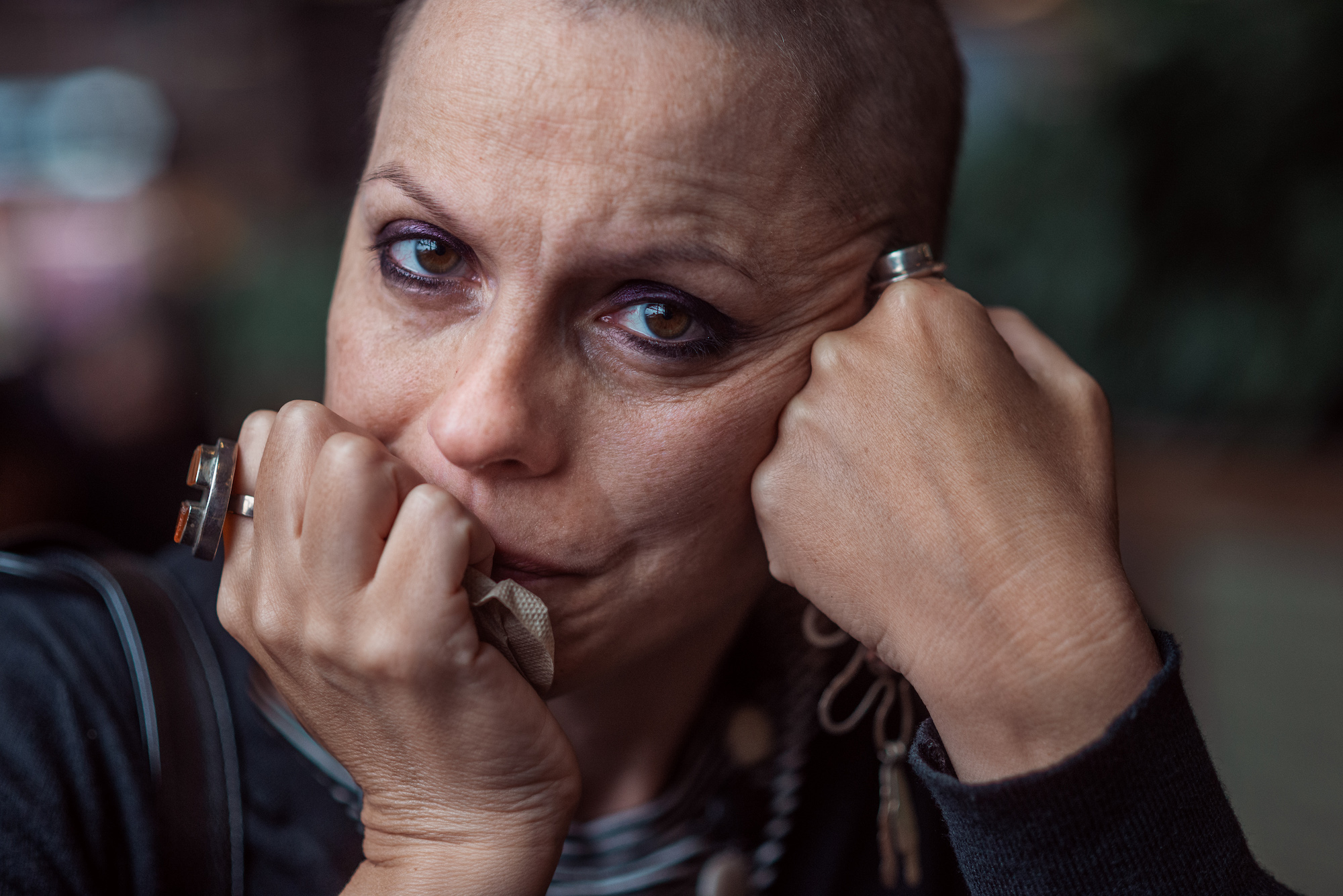
One of the most powerful elements of HER2: The Diagnosed, The Caregiver and Their Son is its tender documentation and processing of these layers through images and text that interacts over time. Through its pages, we see a conversation between two partners unfold, shaped both by the bonds of love that deepen through shared struggle but also the tension and loneliness that it can bring. Anna and Jordan’s candid portraits look past the brave fronts we put on for those we love, continuing to reveal truths to each other after the fact. “While I focused on documenting from my perspective, I didn’t realize I was also being seen,” Jordan writes in his epilogue. “All of the fears I had that I wasn’t doing enough, failing as a father, a husband, and a ‘man,’ yet I saw someone else in her photos.”
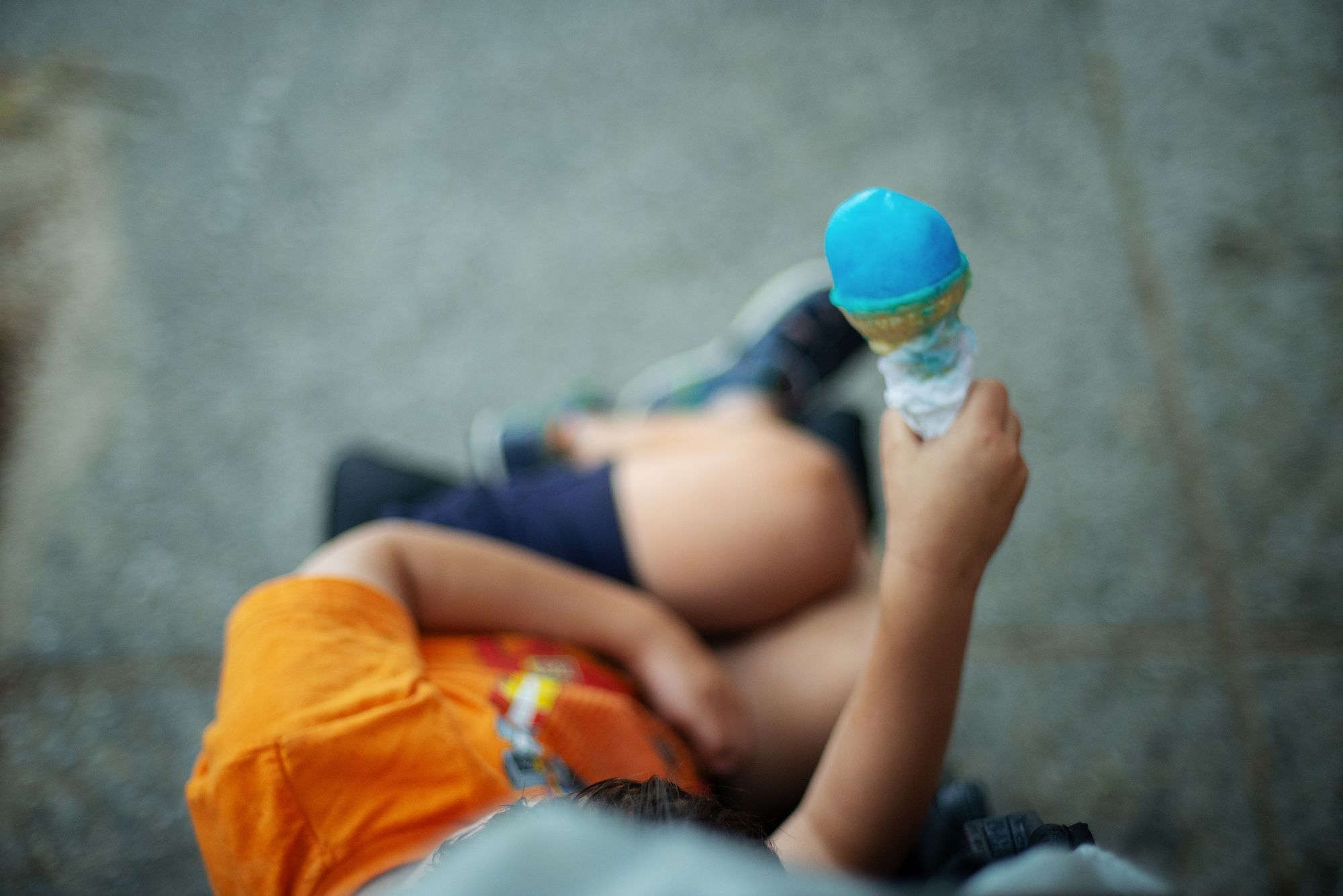
Anna and Jordan’s son Jesse bounds through the book as a colorful presence, full of hope, love and energy; a bright blue ice cream, a painted portrait of his mother, a face scrunched up in the golden sunlight. A salve to the sterility of the hospital, Jordan’s portrait of his wife and son smiling and embracing in a body of water is like a tender note of gratitude to what connection can do in times of need. The realities of dealing with childcare whilst illness is in the family are present too; a photograph of Jesse blowing out his birthday candles is paired with a photograph of Anna exhausted and unable to participate in the celebration. Jordan’s parents, including his mother, who was diagnosed with cancer when he was a child, and Anna’s mother, feature as caregivers as well, showing the wider edges of the system of support holding the pair up through this time.
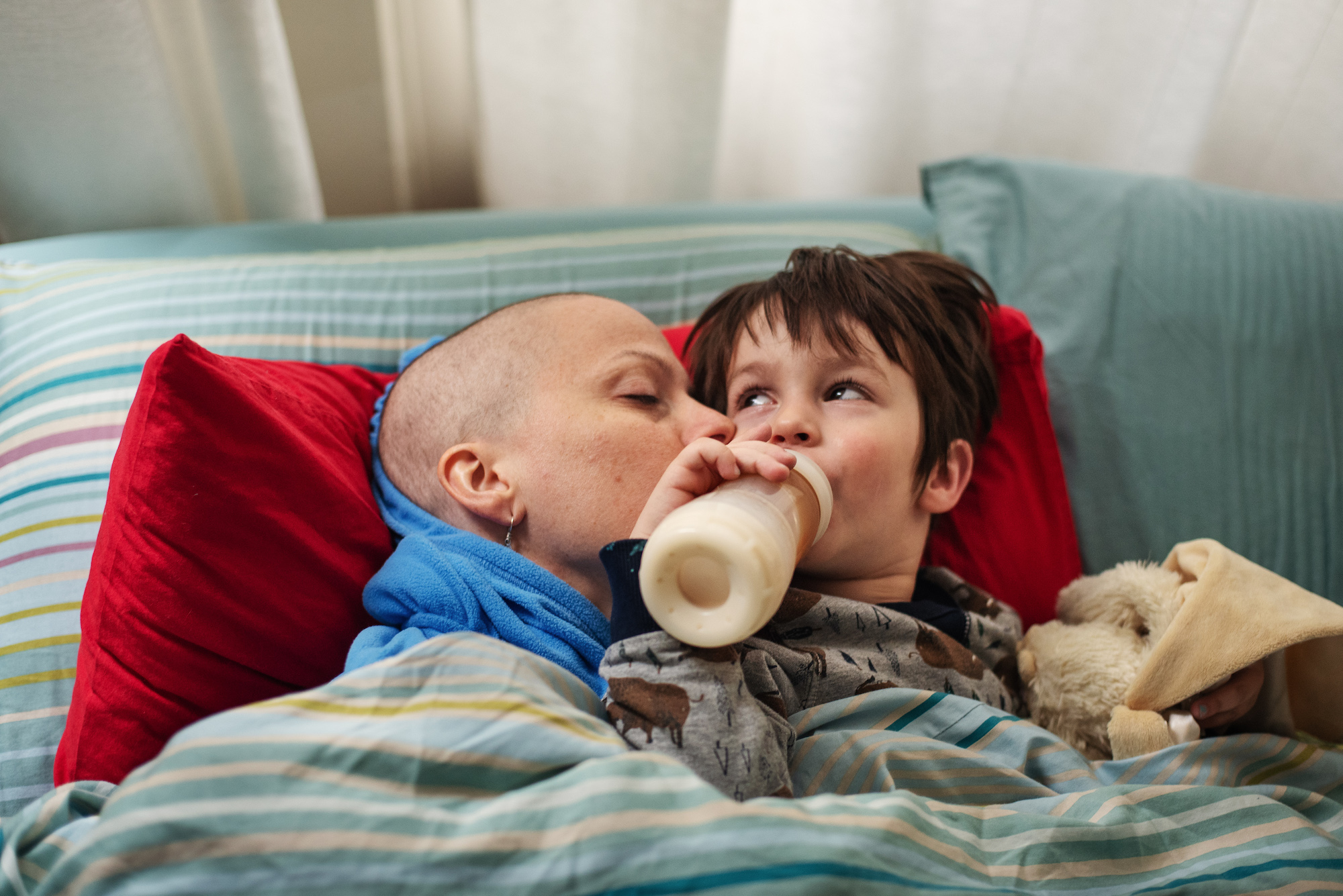
Anna’s annotation next to a photograph of her and Jesse snuggling in bed, her hair gone from chemotherapy—“I will do everything I can to stay here to be with you”—heartbreakingly illuminates the fear of loss that threatens their family life. Scattered through the book, Anna’s self-portraits and introspective texts put forth a deep and full spectrum of feelings. Bravely documenting her physical transformation, the photographer uses her camera as a tool; to express disconnect, fogginess and alienation as well as the impact of treatment on her changing body. “I needed the camera to reclaim my voice amidst feeling powerless,” she writes. With a raw honesty, she writes with acceptance about learning to live with contradictory, coexisting emotions and the paradox of knowing you are loved when you are struggling to love yourself.
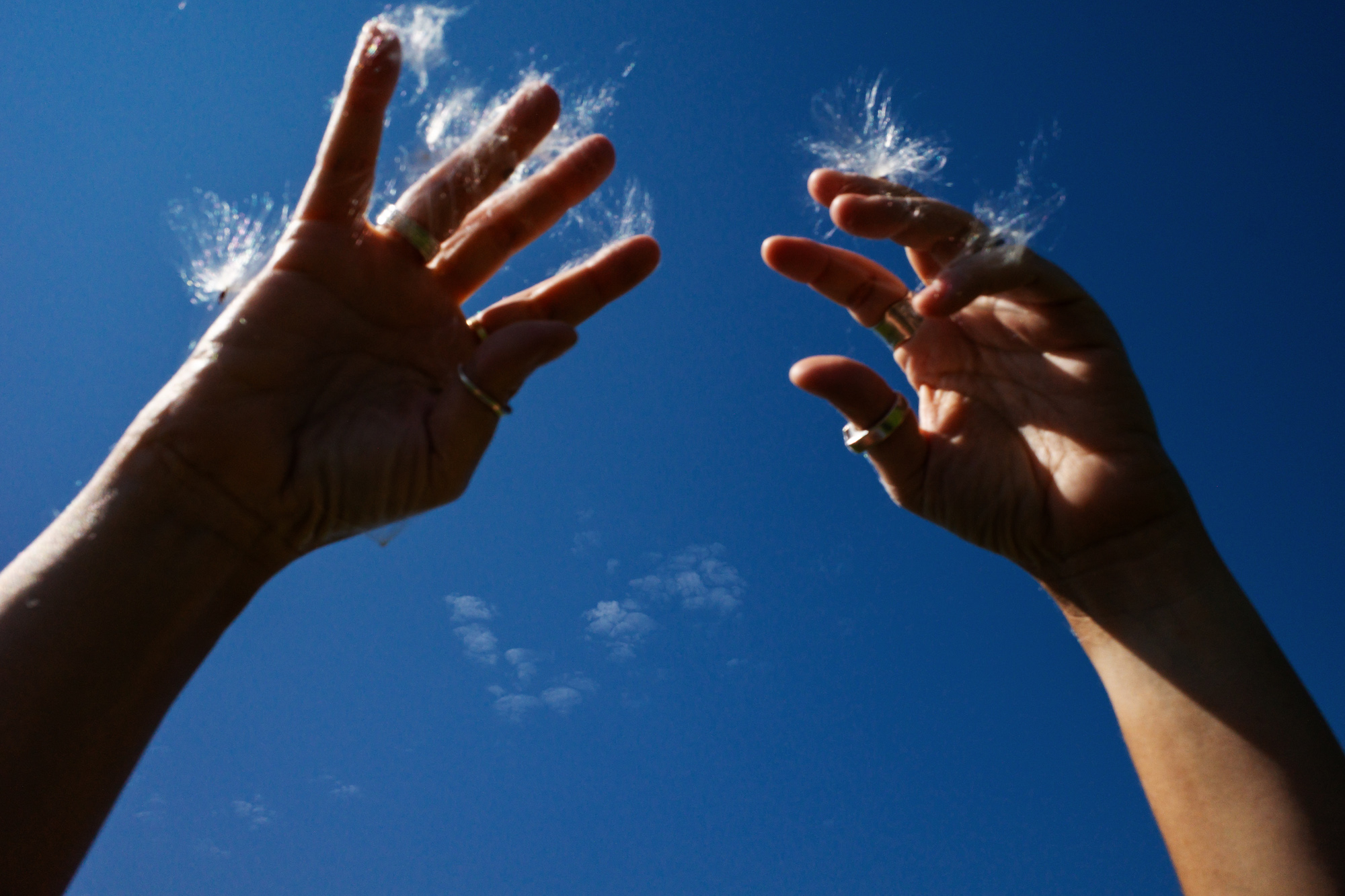
Like the seasonal shifts of glowing summer sun and autumnal leaves that thread HER2: The Diagnosed, The Caregiver and Their Son together—a nod to Anna’s Czech grandfather who used gardening as his mode of healing from the trauma of WW2—Anna and her family grow through the ordeal. The mornings on the other side of survivorship feature blue skies, turning leaves, family time outdoors, a blurry photograph taken by Jesse of his parents kissing, laughter, as well as the untangling of complex emotions that linger after the all-clear. “I’m gluing together the me that was before, the me that was during, and the me now. I am still here, still me, but different,” Anna writes.
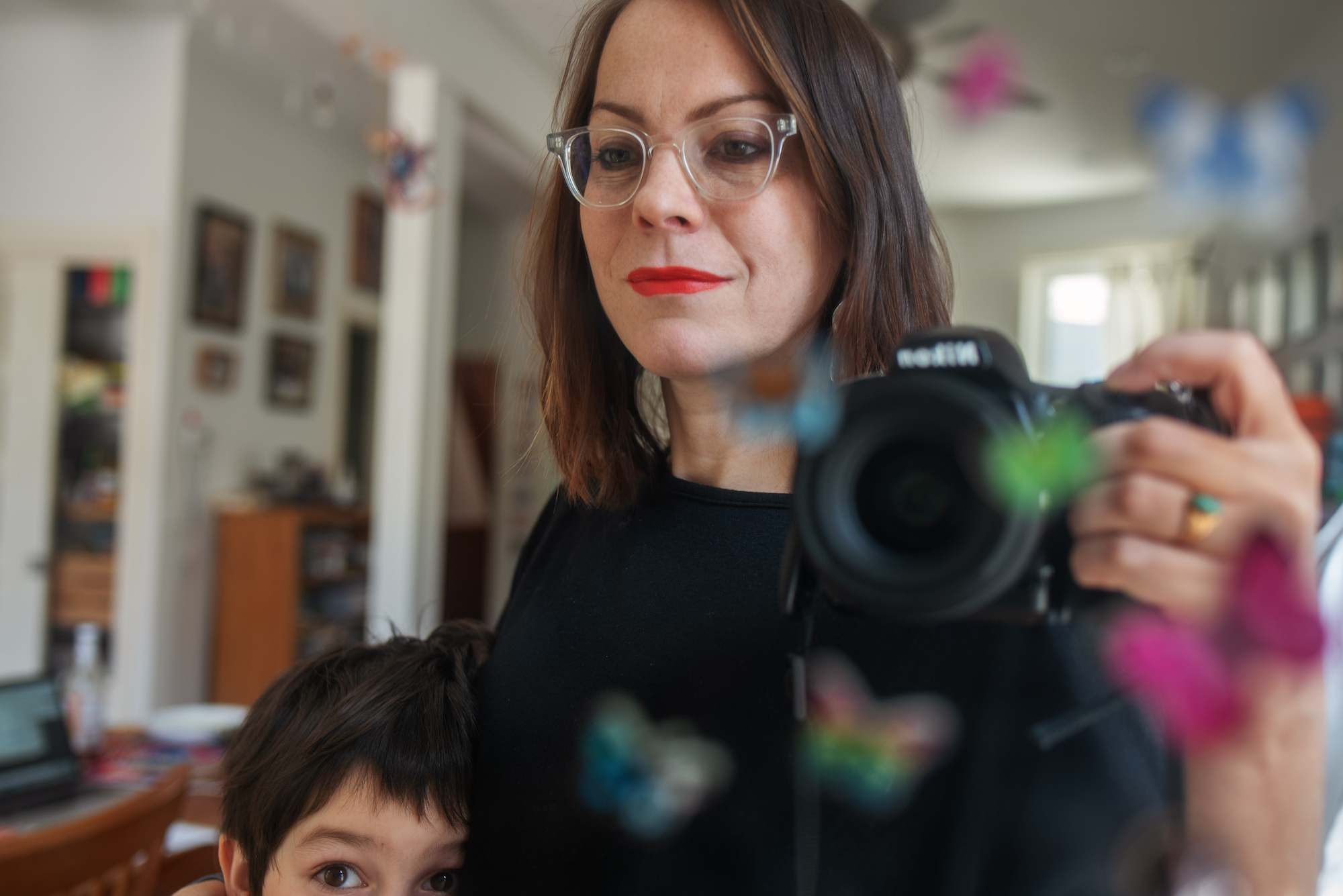
It is in the rhythmic ‘now’ of the sequence of photographs, the addition of thoughts, feelings and observations in text form that crosses time, extensive captions for each image and the two moving reflections on the process written by Anna and Jordan in May 2024 that some of this “gluing” seems to have taken place. Though HER2: The Diagnosed, The Caregiver and Their Sonis a deeply personal and intimate story, in sharing it the Rathkopfs have achieved something quite mammoth: providing companionship to those climbing the same mountain.

